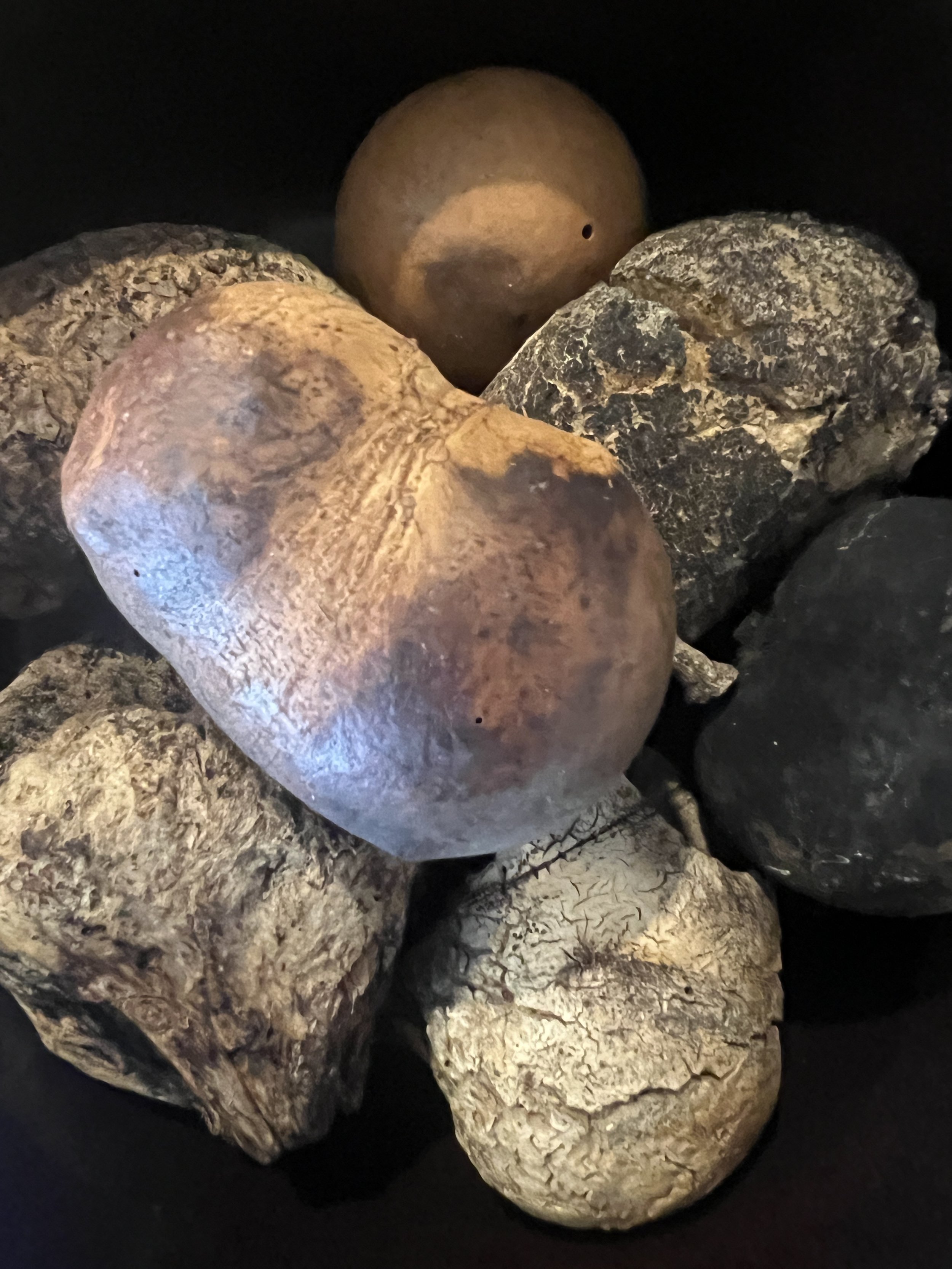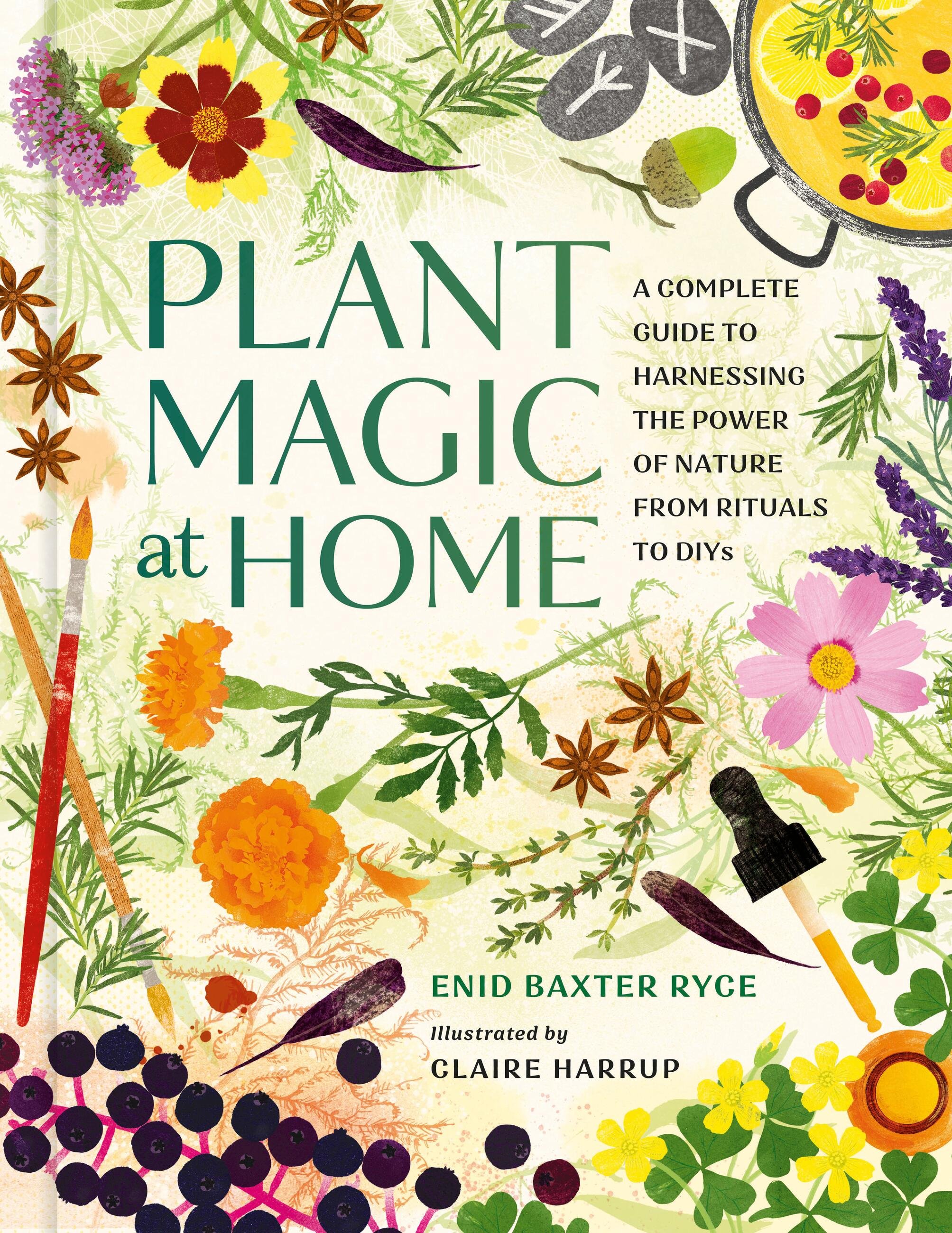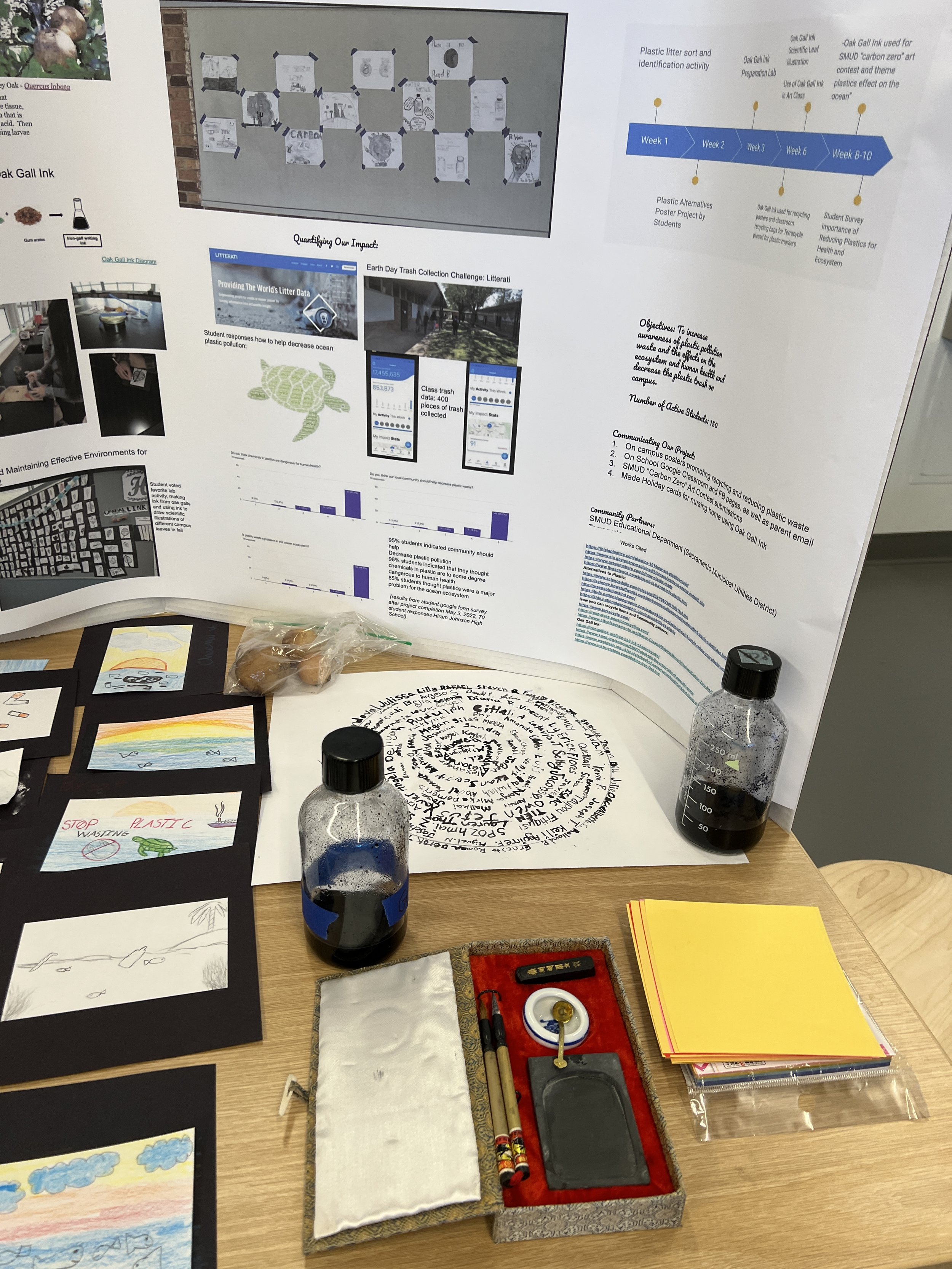Oak Gall Ink
A jar of homemade Oak Gall Ink.
Oak Gall ink is easy to make and has a beautiful purplish black color. Used for over 1500 years, the first recorded use of this ink dates back to the 4th century A.D. The Codex Sinaiticus - the earliest complete Bible - was written in oak gall ink. Other early users included medieval royalty, Leonardo Da Vinci, and early Americans when drafting the Constitution and Bill of Rights.
Oak Galls look like balls formed from oak branches and twigs. They are the egg sacks of the Oak Gall wasp. Once the gall is empty, it dries and turns dark brown. That’s the perfect time to collect them from the oak tree.
Oak galls
Oak Gall Ink Recipe
Note: To be safe, keep your ink-making tools separate from your cooking tools.
Materials:
Oak Galls
A spice or coffee grinder
Distilled water or rainwater
A burner to cook on
A non-reactive pot and spoon
A jar of Iron Liquor
Paper scraps for testing color
Preservative: (whole cloves, wintergreen or thyme essential oil)
Glass Jars
Labels
Ashes (optional)
Process:
1. Make Iron Liquor by covering rusty objects in water or vinegar for several hours or weeks. Some magic spells fall for Liquor made from 13 nails.
2. Crush or chop Oak galls.
3. Using a grinder that you only used for ink making, reduce them to a powder.
4. Place the powder in a pot. For every ¼ cup of Oak Galls, add 2 cups of water.
5. Bring the mixture to a boil the mixture for 5 minutes.
6. Add drops of iron liquor to the cooling ink to shift the color from chestnut to purplish black.
7. Pause when you have a color you like and set some aside.
8. Continue adding iron liquor to the mixture for deeper blacks, noting the amounts in your grimoire.
9. It is traditional to add ashes if the color is not deep enough, although I’ve not experienced this issue.
10. Add whole cloves or essential oils of thyme or wintergreen to prevent molding.
Want to learn more? Please pre-order my new book. :)
One incredible teacher in our NIH-SEPA grant cohort made Oak gall in with her students. They replaced all the Sharpies and other plastic markers in their classroom with safe, natural ink and bamboo brushes. She presented her students’ work at the Monterey Bay Aquarium last year.







